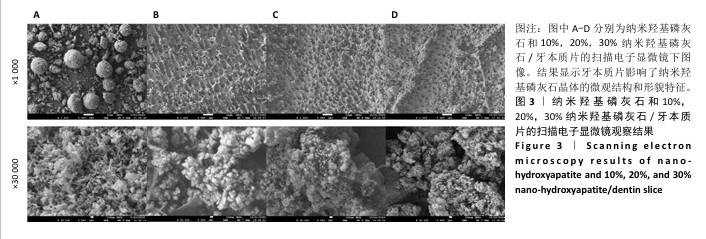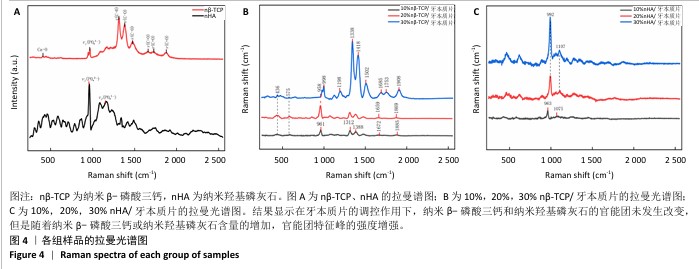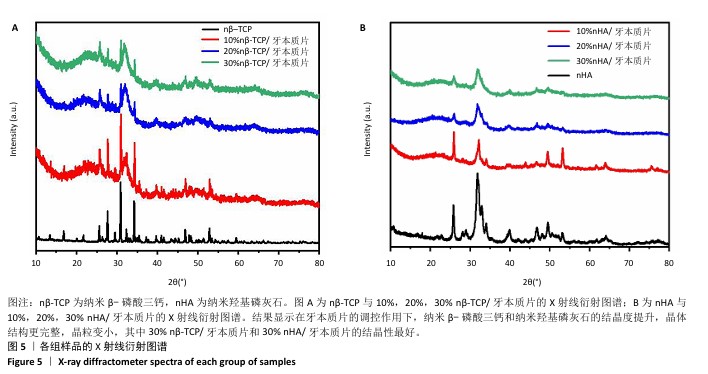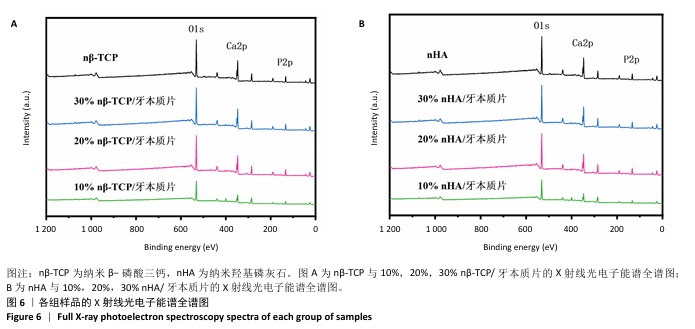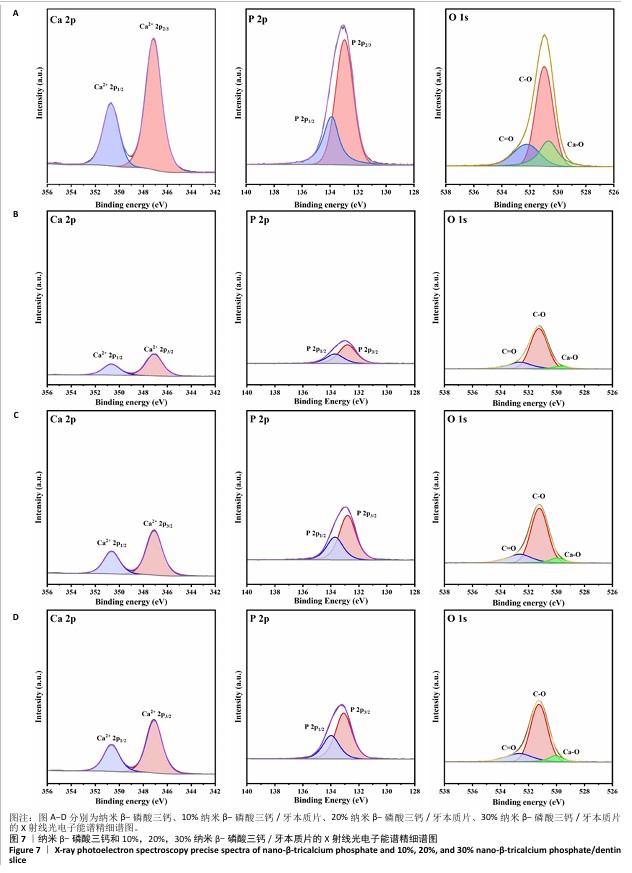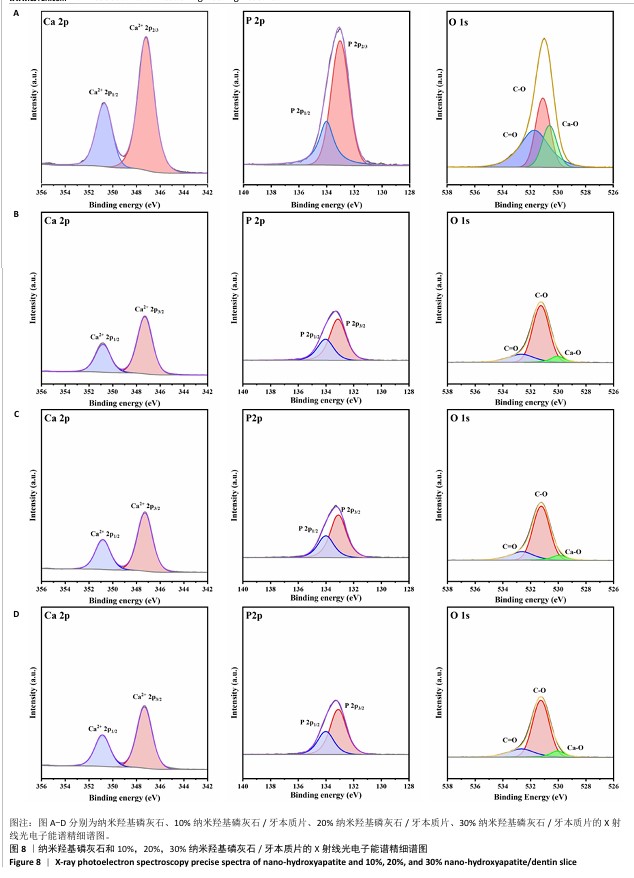[1] 曾建树.根管治疗根尖周炎感染的应用与有效性研究[J].当代医学,2019,25(1):89-91.
[2] LI GH, NIU LN, ZHANG W, et al. Ability of new obturation materials to improve the seal of the root canal system: a review. Acta Biomater. 2014;10(3):1050-1063.
[3] GIACOMINO CM, WEALLEANS JA, KUHN N, et al. Comparative Biocompatibility and Osteogenic Potential of Two Bioceramic Sealers. J Endod. 2019;45(1):51-56.
[4] ÖZDEMIR O, KOÇAK S, HAZAR E, et al. Dentinal tubule penetration of gutta-percha with syringe-mix resin sealer using different obturation techniques: A confocal laser scanning microscopy study. Aust Endod J. 2022;48(2):258-265.
[5] 杨勤,童方丽,杨明,等.根管封闭剂iRoot SP对椭圆形根管根尖封闭性能的评价[J]. 实用医学杂志,2016,32(14):2309-2312.
[6] WUERSCHING SN, DIEGRITZ C, HICKEL R, et al. A comprehensive in vitro comparison of the biological and physicochemical properties of bioactive root canal sealers. Clin Oral Investig. 2022;26(10):6209-6222.
[7] 杨习良,郑天霞,杨诺亚,等.3种根管封闭剂体外细胞相容性、促成骨性及抗菌性的实验研究[J].口腔医学研究,2022,38(11): 1071-1075.
[8] LI Y, LI B, LAI S, et al. The biocompatibility, penetrability, sealing ability, and antibacterial properties of iRoot SP compared to AH plus: An In Vitro evaluation. Arch Oral Biol. 2025;172:106188.
[9] SAGHIRI MA, KARAMIFAR K, NATH D, et al. A novel polyurethane expandable root canal sealer. J Endod. 2021;47(4):612-620.
[10] OSTAPIUK M, TARCZYDŁO J, KAMIŃSKA K, et al. Compressive Strength Testing of Glass-Fibre-Reinforced Tooth Crown Tissues After Endodontic Treatment. Ann Biomed Eng. 2024;52(2):318-326.
[11] MARVANIYA J, AGARWAL K, MEHTA DN, et al. Minimal Invasive Endodontics: A Comprehensive Narrative Review. Cureus. 2022;14(6): e25984.
[12] KOMABAYASHI T, COLMENAR D, CVACH N, et al. Comprehensive review of current endodontic sealers. Dent Mater J. 2020;39(5):703-720.
[13] ZHOU HM, SHEN Y, ZHENG W, et al. Physical properties of 5 root canal sealers. J Endod. 2013;39(10):1281-1286.
[14] HAJI TH, SELIVANY BJ, SULIMAN AA. Sealing ability in vitro study and biocompatibility in vivo animal study of different bioceramic based sealers. Clin Exp Dent Res. 2022;8(6):1582-1590.
[15] KWAK SW, KOO J, SONG M, et al. Physicochemical Properties and Biocompatibility of Various Bioceramic Root Canal Sealers: In Vitro Study. J Endod. 2023;49(7):871-879.
[16] QUARESMA SAL, ALVES DOS SANTOS GN, SILVA-SOUSA AC, et al.
Physicochemical properties of calcium silicate cement based endodontic sealers. J Mech Behav Biomed Mater. 2024;151:106400.
[17] ŠIMUNDIĆ MUNITIĆ M, POKLEPOVIĆ PERIČIĆ T, UTROBIČIĆ A, et al.
Antimicrobial efficacy of commercially available endodontic bioceramic root canal sealers: A systematic review. PLoS One. 2019; 14(10):e0223575.
[18] SATO A, YANAGI T, YAMAGUCHI Y, et al. Effect of DNA/protamine complex paste on bone augmentation of the mandible: A pilot study on dogs. Arch Oral Biol. 2020;115:104729.
[19] HARB SV, BASSOUS NJ, DE SOUZA TAC, et al. Hydroxyapatite and β-TCP modified PMMA-TiO2 and PMMA-ZrO2 coatings for bioactive corrosion protection of Ti6Al4V implants. Mater Sci Eng C Mater Biol Appl. 2020;116:111149.
[20] KAMAL M, ANDERSSON L, TOLBA R, et al. Bone regeneration using composite non- demineralized xenogenic dentin with beta-tricalcium phosphate in experimental alveolar cleft repair in a rabbit model. J Transl Med. 2017;15(1):263.
[21] 李倩,曲曼姑丽•阿布都克力木,胡杨. β-TCP在口腔医学领域的研究进展[J].今日健康,2024(11):142-144.
[22] 裘吉雨,英司奇,刘湘,等.BMP9转染的hPDLSCs与HA-TCP支架复合体促进牙槽骨再生的实验研究[J].重庆医学,2020,49(17): 2849-2856.
[23] REN-JIE XU, JIN-JIN MA, YU X, et al. A biphasic calcium phosphate/acylated methacrylate gelatin composite hydrogel promotes osteogenesis and bone repair. Connect Tissue Res. 2023;64(5):445-456.
[24] 王建平,丛琳. 纳米羟基磷灰石在牙髓炎根管治疗中的临床应用[J].黑龙江医药科学,2015,38(4):67-69.
[25] 王继春,杜春艳,陈云凤.纳米羟基磷灰石在牙髓炎根管治疗中的临床应用与疗效分析[J].世界最新医学信息文摘(连续型电子期刊),2017,17(49):46,48.
[26] TAVARES FJTM, SOARES PIP, SILVA JC, et al. Preparation and In Vitro Characterization of Magnetic CS/PVA/HA/pSPIONs Scaffolds for Magnetic Hyperthermia and Bone Regeneration. Int J Mol Sci. 2023; 24(2):1128.
[27] TRZASKOWSKA M, VIVCHARENKO V, BENKO A, et al. Biocompatible nanocomposite hydroxyapatite-based granules with increased specific surface area and bioresorbability for bone regenerative medicine applications. Sci Rep. 2024;14(1):28137.
[28] 曲曼姑丽•阿布都克力木,李倩,胡杨. 纳米羟基磷灰石在牙体牙髓病学中的研究进展[J].今日健康,2024(11):187-189.
[29] 邵子瑜,李倩,曲曼姑丽•阿布都克力木,等.三种比例双相磷酸钙的制备及性能表征[J].中国组织工程研究,2026,30(8):1952-1961.
[30] CAO Y, MEI ML, LI QL, et al. Agarose hydrogel biomimetic mineralization model for the regeneration of enamel prismlike tissue. ACS Appl Mater Interfaces. 2014;6(1):410-420.
[31] LIN K, XIA L, GAN J, et al. Tailoring the nanostructured surfaces of hydroxyapatite bioceramics to promote protein adsorption, osteoblast growth, and osteogenic differentiation. ACS Appl Mater Interfaces. 2013;5(16):8008-8017.
[32] LI L, MAO C, WANG J, et al. Bio-Inspired Enamel Repair via Glu-Directed Assembly of Apatite Nanoparticles: an Approach to Biomaterials with Optimal Characteristics. Adv Mater. 2011;23(40):4695-4701.
[33] CHANDRA P, SINGH V, SINGH S, et al. Assessment of Fracture Resistances of Endodontically Treated Teeth Filled with Different Root Canal Filling Systems. J Pharm Bioallied Sci. 2021;13(Suppl 1): S109-S111.
[34] WANG YH, LIU SY, DONG YM. In vitro evaluation of the impact of a bioceramic root canal sealer on the mechanical properties of tooth roots. J Dent Sci. 2024;19(3):1734-1740.
[35] WANG Z, FLORCZYK SJ. Freeze-FRESH: A 3D Printing Technique to Produce Biomaterial Scaffolds with Hierarchical Porosity. Materials (Basel). 2020;13(2):354.
[36] QIN K, PARISI C, FERNANDES FM. Recent advances in ice templating: from biomimetic composites to cell culture scaffolds and tissue engineering. J Mater Chem B. 2021;9(4):889-907.
[37] 周延民,杨亿鑫.冰模板技术及其在口腔医学领域的应用进展[J].口腔医学研究,2023,39(9):767-770.
[38] Ozaki M, Sakashita S, Hamada Y, et al. Peptides for Silica Precipitation: Amino Acid Sequences for Directing Mineralization. Protein Pept Lett. 2018;25(1):15-24.
[39] 俞磊,张巍,秦毅,等. 贻贝启发接枝骨形态发生蛋白2成骨活性肽的介孔生物玻璃修复股骨髁缺损[J]. 中国组织工程研究, 2025,29(22):4629-4638.
[40] JANAIRO JIB, SAKAGUCHI T, MINE K, et al. Synergic Strategies for the Enhanced Self-Assembly of Biomineralization Peptides for the Synthesis of Functional Nanomaterials. Protein Pept Lett. 2018;25(1):4-14.
[41] LUO X, ZHANG S, LUO B, et al. Engineering collagen fiber templates with oriented nanoarchitecture and concerns on osteoblast behaviors. Int J Biol Macromol. 2021;185:77-86.
[42] ZHANG W, ZHENG Y, LIU H, et al. A non-invasive monitoring of USPIO labeled silk fibroin/hydroxyapatite scaffold loaded DPSCs for dental pulp regeneration. Mater Sci Eng C Mater Biol Appl. 2019;103:109736.
[43] XU X, CHEN X, LI J. Natural protein bioinspired materials for regeneration of hard tissues. J Mater Chem B. 2020;8(11):2199-2215.
[44] CHEN X, LIU Y, YANG J, et al. The synthesis of hydroxyapatite with different crystallinities by controlling the concentration of recombinant CEMP1 for biological application. Mater Sci Eng C Mater Biol Appl. 2016;59:384-389.
[45] KAMMOUN R, BEHETS C, MANSOUR L, et al. Mineral features of connective dental hard tissues in hypoplastic amelogenesis imperfecta. Oral Dis. 2018;24(3):384-392.
[46] HUANG F, SHEN Q, ZHAO J. Growth and differentiation of neural stem cells in a three-dimensional collagen gel scaffold. Neural Regen Res. 2013;8(4):313-319.
[47] BANGLMAIER RF, SANDER EA, VANDEVORD PJ. Induction and quantification of collagen fiber alignment in a three-dimensional hydroxyapatite-collagen composite scaffold. Acta Biomater. 2015;17: 26-35.
[48] ABDEL-RAHMAN RM, VISHAKHA V, KELNAR I, et al. Synergistic performance of collagen-g-chitosan-glucan fiber biohybrid scaffold with tunable properties. Int J Biol Macromol. 2022;202:671-680.
[49] HOSSAIN M, JEONG JH, SULTANA T, et al. A composite of polymethylmethacrylate, hydroxyapatite, and β-tricalcium phosphate for bone regeneration in an osteoporotic rat model. J Biomed Mater Res B Appl Biomater. 2023;111(10):1813-1823.
[50] FU M, LI J, LIU M, et al. Sericin/Nano-Hydroxyapatite Hydrogels Based on Graphene Oxide for Effective Bone Regeneration via Immunomodulation and Osteoinduction. Int J Nanomedicine. 2023; 18:1875-1895.
[51] SOARES Í, SOTELO L, ERCEG I, et al. Improvement of Metal-Doped β-TCP Scaffolds for Active Bone Substitutes via Ultra-Short Laser Structuring. Bioengineering (Basel). 2023;10(12):1392.
[52] PINHEIRO ALB, Soares LGP, Marques AMC, et al. Biochemical changes on the repair of surgical bone defects grafted with biphasic synthetic micro-granular HA + β-tricalcium phosphate induced by laser and LED phototherapies and assessed by Raman spectroscopy. Lasers Med Sci. 2017;32(3):663-672.
[53] TAN N, SABALIC-SCHOENER M, NGUYEN L, et al. β-Tricalcium Phosphate-Loaded Chitosan-Based Thermosensitive Hydrogel for Periodontal Regeneration. Polymers (Basel). 2023;15(20):4146.
[54] UMA MAHESHWARI S, GOVINDAN K, RAJA M, et al. Preliminary studies of PVA/PVP blends incorporated with HAp and β-TCP bone ceramic as template for hard tissue engineering. Biomed Mater Eng. 2017;28(4):401-415.
[55] REYES-GASGA J, MARTÍNEZ-PIÑEIRO EL, RODRÍGUEZ-ÁLVAREZ G, et al. XRD and FTIR crystallinity indices in sound human tooth enamel and synthetic hydroxyapatite. Mater Sci Eng C Mater Biol Appl. 2013; 33(8):4568-74.
[56] XU M, QIN M, ZHANG X, et al. Porous PVA/SA/HA hydrogels fabricated by dual-crosslinking method for bone tissue engineering. J Biomater Sci Polym Ed. 2020;31(6):816-831.
[57] ZHU S, SUN H, MU T, et al. Cellulose nano-dispersions enhanced by ultrasound assisted chemical modification drive osteoblast proliferation and differentiation in PVA/HA bone tissue engineering scaffolds. Int J Biol Macromol. 2024;279(Pt 4):135571.
[58] ZHANG K, LIU Y, ZHAO Z, et al. Magnesium-Doped Nano-Hydroxyapatite/Polyvinyl Alcohol/Chitosan Composite Hydrogel: Preparation and Characterization. Int J Nanomedicine. 2024;19: 651-671.
[59] CHOY CS, LEE WF, LIN PY, et al. Surface Modified β-Tricalcium phosphate enhanced stem cell osteogenic differentiation in vitro and bone regeneration in vivo. Sci Rep. 2021;11(1):9234.
[60] Minetti E, Palermo A, Malcangi G, et al. Dentin, Dentin Graft, and Bone Graft: Microscopic and Spectroscopic Analysis. J Funct Biomater. 2023;14(5):272.
[61] lSHEMARY AZ, CHEIKH L, ARDAKL SS. Extraction and degradation rate analysis of calcium phosphate from diverse fish Bones: A comparative study. J Saudi Chem Soc. 2024;28(3).doi:10.1016/j.jscs.2024.101859. |

